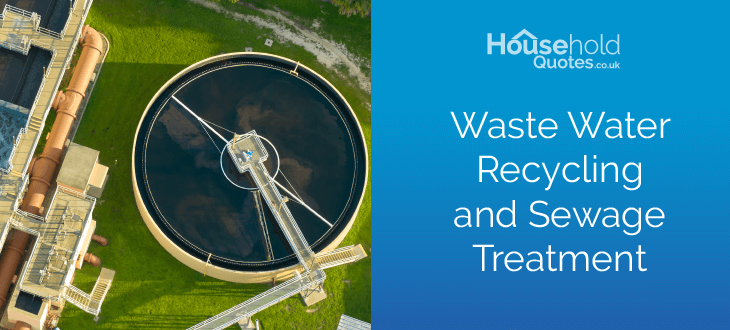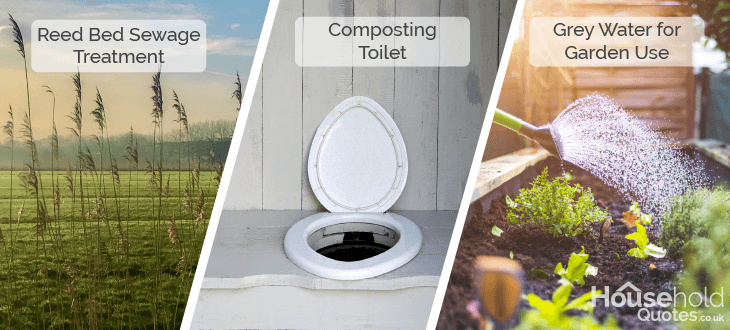- Householdquotes.co.uk
- Waste Water Recycling and Sewage Treatment
Waste Water Recycling and Sewage Treatment

Water and waste that we discard can be recycled and provide a valuable resource. Waste water from baths, showers, washing machines, dishwashers and sinks is often referred to as Grey Water. Waste from toilets is known as Black Water.
Grey Water Recycling for Garden Use
Untreated greywater can be used for garden watering if used immediately after it is produced. The waste water from kitchen sinks and dishwashers is not usually collected as it is too heavily contaminated.
Soil is very effective at filtering out many contaminants in grey water. However water containing soap or detergents does have the potential to cause soil, especially clay based soils, to lose their structure.
Water that has been used with bleach or boron compounds most often found in dishwasher detergents should not be used. Grey water should not be used for watering edible crops.
If available, the best source of water for your garden is rainwater.
The Horticultural Trades Association has useful advice on greywater use on your garden and an explanation of the restrictions imposed by a Drought Order.
Composting Toilets
For those of us too remote to have a direct mains sewerage connection, where a mains connection is impossible such as a narrow boat, houseboat or RV, or those that wish to take advantage of the nutrients we would otherwise flush away, a composting toilet may be the answer.
Composting toilets compost the waste into a form that can safely be used as fertiliser. They range in size from the dual box system that relies on natural decomposition and has the capacity to handle two years’ waste to smaller systems that use raking or tumbling mechanisms to speed up decomposition.
The better waterless toilet designs are silent, odour free and do not splash, and at the end of the decomposition process you will have free compost that can be used in the garden.

Reed Bed Sewage Treatment
Reed beds are useful secondary and tertiary sewage treatments where the space is available or a high level of effluent discharge quality is required. They also have the advantage of providing a very low maintenance, aesthetically pleasing and ecological beneficial resource. As a wildlife habitat they are particularly attractive to invertebrates such as dragonflies and damselflies.
Treating sewage usually involves a combination of different methods to separate out solids, deal with pathogenic (disease carrying) organisms, and remove nutrients.
The first stage (primary treatment) is the separation of most of the solids from the liquid effluent, usually by some kind of settlement chamber. The most common example is the septic tank. These are a robust and economic option if used properly. Most of the solid material will either sink (as sludge) or float to the top (as crust), leaving the effluent between to flow out to a secondary treatment stage.
A common secondary treatment system is a leachfield. This is a system of perforated pipes laid in underground gravel trenches. They are unsuitable for clayey soils or areas with a high water table. The liquid effluent percolates through the gravel, where solids are removed and digested by micro-organisms, leaving the liquid clean enough to filter into groundwater.
Vertical flow reed beds are another kind of secondary treatment. The effluent from a septic tank (or similar) is percolated through a tank containing layers of sand and gravel planted with reeds. The reeds help bacteria to break down the pollutants and make the beds attractive to wildlife. Horizontal flow reed beds are usually used as a third stage of treatment where very high quality effluent is required.
The Centre for Alternative Technology has a tip sheet 'Constructed Wetlands and Reed Beds' explaining the construction of reed beds, and where and when they are appropriate.
